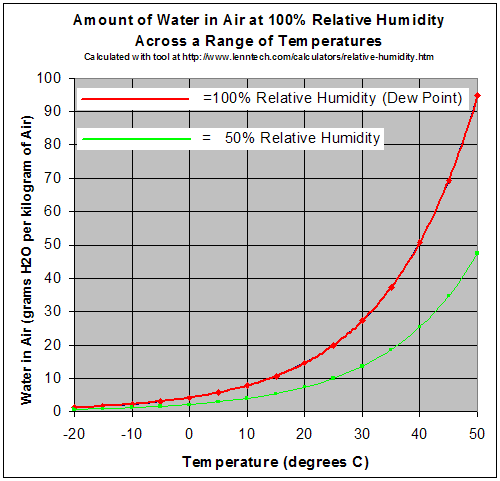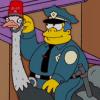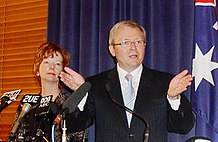
General Thread - Fapruary Edition '13
#1661

Posted 08 February 2013 - 09:36 AM
#1662

Posted 08 February 2013 - 09:36 AM
a few episodes of himym
It's just starting to get good again. Start of the season (end of last year) it got pretty boring and shit, but it's picking up again.
Not many episodes left!
Ugh i could ramble on for forking days about this stuff.
#1663

Posted 08 February 2013 - 09:38 AM
It's just starting to get good again. Start of the season (end of last year) it got pretty boring and shit, but it's picking up again.
Not many episodes left!
Then next season its all over.
#1664

Posted 08 February 2013 - 09:39 AM
interested to hear, is anyone following this Doping Sports scandal thats going on in the AFL/NRL currently? if so also interested to hear opinions on it as well
Hardly just AFL/NRL, they're just the only thing people care about. The AOC even made a statement at that PC, but it barely got reported!
#1665

Posted 08 February 2013 - 09:41 AM
Hardly just AFL/NRL, they're just the only thing people care about. The AOC even made a statement at that PC, but it barely got reported!
i think they are mainly talking about it in AFL and NRL only because they are our 2 biggest sports here in Australia, and like you said all that people care about.
will be interesting if these allegations are true to see how many sports and teams are involved and how deep it goes, but the way they are reporting it, its sounding like its a pretty big and elaborate scheme
#1666

Posted 08 February 2013 - 09:43 AM
#1667

Posted 08 February 2013 - 09:44 AM
Please for fucks sake let's not talk about that in this thread, make a drug sports thread or something, already sick of hearing about it in the news.
+1
#1668

Posted 08 February 2013 - 09:45 AM
Then next season its all over.
I thought this was the last season?
Please for fucks sake let's not talk about that in this thread, make a drug sports thread or something, already sick of hearing about it in the news.
Politics.
Ugh i could ramble on for forking days about this stuff.
#1669

Posted 08 February 2013 - 09:46 AM
I thought this was the last season?
We are currently in season 8. They got renewed for a 9th and final season a few weeks back.
#1670

Posted 08 February 2013 - 09:47 AM
#1671

Posted 08 February 2013 - 09:48 AM
Gonna head to that cruise in our Capitol tomorrow I think!

#1672

Posted 08 February 2013 - 09:48 AM
Please for fucks sake let's not talk about that in this thread, make a drug sports thread or something, already sick of hearing about it in the news.
Definition
The relative humidity
 of an air-water mixture is defined as the ratio of the partial pressure of water vapor (H2O)
of an air-water mixture is defined as the ratio of the partial pressure of water vapor (H2O)  in the mixture to the saturated vapor pressure of water
in the mixture to the saturated vapor pressure of water  at a given temperature.
at a given temperature.Relative humidity is normally expressed as a percentage and is calculated by using the following equation:[1]

[edit]Significance
[edit]Climate control
Climate control refers to the control of temperature and relative humidity for human comfort, health and safety, and for the technical requirements of machines and processes, in buildings, vehicles and other enclosed spaces.
[edit]Comfort
Humans are sensitive to humid air because the human body uses evaporative cooling as the primary mechanism to regulate temperature. Under humid conditions, the rate at which perspiration evaporates on the skin is lower than it would be under arid conditions. Because humans perceive the rate of heat transfer from the body rather than temperature itself,[2] we feel warmer at a given temperature when the relative humidity is high than when it is low.
For example, if the air temperature is 24 °C (75 °F) and the relative humidity is zero percent, then the air temperature feels like 21 °C (69 °F).[3] If the relative humidity is 100 percent at the same air temperature, then it feels like 27 °C (80 °F).[3] In other words, if the air is 24 °C (75 °F) and contains saturated water vapor, then the human body cools itself at the same rate as it would if it were 27 °C (80 °F) and dry.[3] The heat index and the humidex are indices that reflect the combined effect of temperature and humidity on the cooling effect of the atmosphere on the human body.
Depending on the temperature, humans can be comfortable within a wide range of humidities—anywhere from 30 to 70 percent.[4]
[edit]Buildings
For climate control in buildings using HVAC systems, the key is to maintain the relative humidity at a comfortable range—low enough to be comfortable but high enough to avoid problems associated with very dry air.
When the temperature is high and the relative humidity is low, evaporation of water is rapid; soil dries, wet clothes hung on a line or rack dry quickly, and perspiration readily evaporates from the skin. Wooden furniture can shrink, causing the paint that covers these surfaces to fracture.
When the temperature is high and the relative humidity is high, evaporation of water is slow. When relative humidity approaches 100 percent, condensation can occur on surfaces, leading to problems with mold, corrosion, decay, and other moisture-related deterioration.
Certain production and technical processes and treatments in factories, laboratories, hospitals, and other facilities require specific relative humidity levels to be maintained using humidifiers, dehumidifiers and associated control systems.
[edit]Vehicles
The basic principles for buildings, above, also apply to vehicles. In addition, there may be safety considerations. For instance, high humidity inside a vehicle can lead to problems of condensation, such as misting of windshields and shorting of electrical components.
In sealed vehicles and pressure vessels such as pressurized airliners, submersibles and spacecraft, these considerations may be critical to safety, and complex environmental control systems including equipment to maintain pressure are needed. Airliners operate with low internal relative humidity, often under 10%, especially on long flights. The low humidity is a consequence of drawing in the very cold air with a low absolute humidity, which is found at airliner cruising altitudes. Subsequent warming of this air lowers its relative humidity. This causes discomfort such as sore eyes, dry skin, and drying out of mucosa, but humidifiers are not employed to raise it to comfortable mid-range levels because the volume of water required to be carried on board can be a significant weight penalty. As airliners descend from colder altitudes into warmer air (perhaps even flying through clouds a few thousand feet above the ground), the ambient relative humidity can increase dramatically. Some of this moist air is usually drawn into the pressurized aircraft cabin and into other non-pressurized areas of the aircraft and condenses on the cold aircraft skin. Liquid water can usually be seen running along the aircraft skin, both on the inside and outside of the cabin. Because of the drastic changes in relative humidity inside the vehicle, components must be qualified to operate in those environments. The recommended environmental qualifications for most commercial aircraft components is listed in RTCA DO-160.
[edit]Aviation
Cold humid air can provoke the formation of ice, which is a danger to aircraft as it affects the wing profile and increases weight. Carbureted engines have a further danger of ice forming inside the carburetor. Aviation weather reports (METARs) therefore include an indication of relative humidity, usually in the form of the dew point.
In addition, air with higher humidity is less dense, providing lower lift and lower propeller or turbine efficiency (this is somewhat offset by decreased drag). Pilots must take humidity into account when calculating takeoff distances because high humidity will require longer runways and will decrease the climb gradient.
[edit]Measurement
The humidity of an air-water vapor mixture is determined through the use of psychrometric charts if both the dry bulb temperature (T) and the wet bulb temperature (Tw) of the mixture are known. These quantities are readily estimated by using a slingpsychrometer.
There are several empirical correlations that can be used to estimate the saturated vapor pressure of water vapor as a function of temperature. The Antoine equation is among the least complex of these formulas, having only three parameters (A, B, and C). Other correlations, such as those presented by Goff-Gratch and Magnus Tenten, are more complicated but yield better accuracy[citation needed]. The correlation presented by Buck[5] is commonly encountered in the literature and provides a reasonable balance between complexity and accuracy[citation needed]:

where
 is the dry bulb temperature expressed in degrees Celsius (°C),
is the dry bulb temperature expressed in degrees Celsius (°C),  is the absolute pressure expressed in hectopascals (hPa), and
is the absolute pressure expressed in hectopascals (hPa), and  is the saturated vapor pressure expressed in hectopascals (hPa).
is the saturated vapor pressure expressed in hectopascals (hPa).Buck has reported that the maximum relative error is less than 0.20% between -20°C and +50°C when this particular form of the generalized formula is used to estimate the saturated vapor pressure of water.
[edit]Misconception
Often the notion of air holding water vapor is presented to describe the concept of relative humidity. This, however, is a misconception. Air is a mixture of gases (nitrogen, oxygen, argon, water vapor, and other gases) and as such the constituents of the mixture simply act as a transporter of water vapor but are not a holder of it.
Relative Humidity is defined in terms of only the physical properties of water and thus is unrelated to the notion of air holding water.[6][7] In fact, an air-less volume can contain water vapor and therefore the humidity of this volume can be readily determined.
[edit]Pressure dependence
The relative humidity of a closed air-water system is dependent not only on the temperature but also on the absolute pressure of the system of interest. This dependence is demonstrated by considering the air-water system shown below. The system is closed (i.e., no matter enters or leaves the system).

If the system at State A is isobarically heated (heating with no change in system pressure) then the relative humidity of the system decreases because the saturated vapor pressure of water increases with increasing temperature. This is shown in State B.
If the system at State A is isothermally compressed (compressed with no change in system temperature) then the relative humidity of the system increases because the partial pressure of water in the system increases with the volume reduction. This is shown in State C.
Therefore a change in relative humidity can be explained by a change in system temperature, a change in the absolute pressure of the system, or change in both of these system properties.
[edit]Enhancement factor
The enhancement factor
 is defined as the ratio of the saturated vapor pressure of water in moist air
is defined as the ratio of the saturated vapor pressure of water in moist air  to the saturated vapor pressure of pure water.
to the saturated vapor pressure of pure water.
The enhancement factor is equal to unity for ideal gas systems. However, in real systems the interaction effects between gas molecules result in a small increase of the saturation vapor pressure of water in air relative to saturated vapor pressure of pure water vapor. Therefore, the enhancement factor is normally slightly greater than unity for real systems.
The enhancement factor is commonly used to correct the saturated vapor pressure of water vapor when empirical relationships, such as those developed by Wexler, Goff, and Gratch, are used to estimate the properties of psychrometric systems.
Buck has reported that, at sea level, the vapor pressure of water in saturated moist air amounts to an increase of approximately 0.5% over the saturated vapor pressure of pure water.[8]
[edit]Related concepts
The term relative humidity is reserved for systems of water vapor in air. The term relative saturation is used to describe the analogous property for systems consisting of a condensable phase other than water in a non-condensable phase other than air.[9]
[edit]Other important facts

A gas in this context is referred to as saturated when the vapor pressure of water in the air is at the equilibrium vapor pressure for water vapor at the temperature of the gas and water vapor mixture; liquid water (and ice, at the appropriate temperature) will fail to lose mass through evaporation when exposed to saturated air. It may also correspond to the possibility of dew or fog forming, within a space that lacks temperature differences among its portions, for instance in response to decreasing temperature. Fog consists of very minute droplets of liquid, primarily held aloft by isostatic motion (in other words, the droplets fall through the air at terminal velocity, but as they are very small, this terminal velocity is very small too, so it doesn't look to us like they are falling, and they seem to be held aloft).
The statement that relative humidity (RH%) can never be above 100%, while a fairly good guide, is not absolutely accurate, without a more sophisticated definition of humidity than the one given here. An arguable exception is the Wilson cloud chamber, which uses, in nuclear physics experiments, an extremely brief state of "supersaturation" to accomplish its function.
For a given dewpoint and its corresponding absolute humidity, the relative humidity will change inversely, albeit nonlinearly, with the temperature. This is because the partial pressure of water increases with temperature – the operative principle behind everything from hair dryers to dehumidifiers.
Due to the increasing potential for a higher water vapor partial pressure at higher air temperatures, the water content of air at sea level can get as high as 3% by mass at 30 °C (86 °F) compared to no more than about 0.5% by mass at 0 °C (32 °F). This explains the low levels (in the absence of measures to add moisture) of humidity in heated structures during winter, resulting in dry skin, itchy eyes, and persistence of static electric charges. Even with saturation (100% relative humidity) outdoors, heating of infiltrated outside air that comes indoors raises its moisture capacity, which lowers relative humidity and increases evaporation rates from moist surfaces indoors (including human bodies and household plants.)
Similarly, during summer in humid climates a great deal of liquid water condenses from air cooled in air conditioners. Warmer air is cooled below its dewpoint, and the excess water vapor condenses. This phenomenon is the same as that which causes water droplets to form on the outside of a cup containing an ice-cold drink.
A useful rule of thumb is that the maximum absolute humidity doubles for every 20 °F or 10 °C increase in temperature. Thus, the relative humidity will drop by a factor of 2 for each 20 °F or 10 °C increase in temperature, assuming conservation of absolute moisture. For example, in the range of normal temperatures, air at 68 °F or 20 °C and 50% relative humidity will become saturated if cooled to 50°F or 10 °C, its dewpoint, and 41 °F or 5 °C air at 80% relative humidity warmed to 68 °F or 20 °C will have a relative humidity of only 29% and feel dry. By comparison, a relative humidity between 40% and 60% is considered healthy and comfortable in comfort-controlled environments (ASHRAE Standard 55 - see thermal comfort).
Water vapor is a lighter gas than other gaseous components of air at the same temperature, so humid air will tend to rise by natural convection. This is a mechanism behind thunderstorms and other weather phenomena. Relative humidity is often mentioned in weather forecasts and reports, as it is an indicator of the likelihood of precipitation, dew, or fog. In hot summer weather, it also increases the apparent temperature to humans (and other animals) by hindering the evaporation ofperspiration from the skin as the relative humidity rises. This effect is calculated as the heat index or humidex.
A device used to measure humidity is called a hygrometer; one used to regulate it is called a humidistat, or sometimes hygrostat. (These are analogous to a thermometer and thermostat for temperature, respectively.)
#1673

Posted 08 February 2013 - 09:49 AM
 you and your words, Nik!
you and your words, Nik!

#1674

Posted 08 February 2013 - 09:49 AM
Ugh i could ramble on for forking days about this stuff.
#1675

Posted 08 February 2013 - 09:49 AM

I put up with people from amnesty, red cross and now the cancer council almost daily hounding me!! Throw in the greens, green peace, unhcr, save the forking children and I've well and truly hit my limit for the number of fuckstains wanting me to sign something or give money. Seriously cubts,right off.
#1676

Posted 08 February 2013 - 09:50 AM

Ugh i could ramble on for forking days about this stuff.
#1677

Posted 08 February 2013 - 09:50 AM
Gillard was born on 29 September 1961 in Barry, Wales.[2] After she suffered from bronchopneumonia as a child, her parents were advised it would aid her recovery if they were to live in a warmer climate.[7]This led the family to migrate to Australia in 1966, settling in Adelaide.[8] In 1974, 18 years after they arrived, Gillard and her family became Australia citizens. As a result Gillard held dual Australian/British citizenship until she renounced her British citizenship prior to entering Parliament in 1998.[9][10] Gillard's mother, Moira, currently lives in Pasadena, South Australia.[11] She also has a sister, Alison, who is three years older.[7] Gillard's father, John, died in 2012.[12]
Gillard's father worked as a psychiatric nurse, while her mother worked at the local Salvation Army nursing home.[7] She and her sister attended Mitcham Demonstration School, and Julia went on to attendUnley High School.[13] She then studied at the University of Adelaide but cut short her courses in 1982 and moved to Melbourne to work with the Australian Union of Students.[14] She graduated from theUniversity of Melbourne with Bachelor of Arts and Bachelor of Laws degrees in 1986.[15]
In 1987, Gillard joined the law firm Slater & Gordon at Werribee, Melbourne, working in industrial law.[3] In 1990, at the age of 29, she was admitted as a partner.[16] Gillard took leave of absence in September 1995 to campaign for a Senate seat and resigned in May 1996, to work as chief of staff to Victorian opposition leader John Brumby.[17] According to The Australian newspaper, Gillard's departure occurred "amid fractured relationships between partners at Slater & Gordon" partly attributable to the AWU affair.[18]
Politics
Introduced to politics in her second year at the University of Adelaide by the daughter of a State Labor Minister, Gillard joined the Labor Club and became involved in a campaign to fight federal education budget cuts.[7][8]
After moving to Melbourne, in 1983 Gillard became the second woman to lead the Australian Union of Students. She was also formerly the secretary of the left-wing organisation, Socialist Forum.[19]
In 1995, Gillard took leave from her legal firm to contest the 1996 federal election as a Senate candidate, standing third on the ALP's ticket, although she was unsuccessful.[20][21]
One year later in 1996, Gillard resigned from her position with Slater & Gordon in order to become the Chief of Staff to John Brumby, at that time the Leader of the Opposition in Victoria.[2][21] She was responsible for drafting the affirmative-action rules within the Labor Party in Victoria that set the target of pre-selecting women for 35 per cent of "winnable seats".[8][22] She also played a role in the foundation of EMILY's List, the pro-choice fund-raising and support network for Labor women.[23]
The Welsh Labour politician Aneurin Bevan remains one of her political heroes.[16]
Member of Parliament
Gillard was first elected to the House of Representatives at the 1998 federal election representing Lalor, a safe Labor seat near Melbourne, replacing Barry Jones who retired. She made her maiden speech to the House on 11 November 1998.[24]
Shadow Cabinet
After Labor's defeat at the 2001 federal election, Gillard was elected to the Shadow Cabinet under then-Labor Leader Simon Crean, where she was given responsibility for Population and Immigration. In February 2003, she was given additional responsibilities for Reconciliation and Indigenous Affairs.[25] In these roles, in the wake of the Tampa and Children Overboard affairs, which were partly credited with Labor's 2001 election loss, Gillard developed a new immigration policy for the Labor Party.[8]
[/center]
Gillard was later promoted to the position of Shadow Minister for Health in July 2003.[26] During this time, she shadowed Tony Abbott, with the rivalry between the two often attracting attention from the media.[27] She was later given additional responsibility for managing opposition business in the House of Representatives by new Labor Leader Mark Latham.[28]
In the aftermath of Labor's fourth consecutive defeat in the 2004 federal election it was widely speculated that Gillard might challenge Jenny Macklin for the deputy leadership, but she did not do so.[29] Gillard had been spoken of as a potential future leader of the party for some years, but never stood in a leadership contest. After Mark Latham resigned as Labor Leader in January 2005, Gillard appeared on ABC's Australian Story in March 2006, after which an Ipsos Mackay poll conducted for Network Ten's Meet the Press found that more respondents would prefer Gillard to be Labor Leader; she polled 32% compared with Beazley's 25% and Kevin Rudd's 18%.[7][30][31] Although she had significant cross-factional support, she announced on 25 January 2005 that she would not contest the leadership, allowing Beazley to be elected unopposed.[32]
Deputy Leader of the Opposition
On 1 December 2006, as part of a cross-factional political partnership with Kevin Rudd, Gillard challenged Jenny Macklin for the deputy leadership.[33] After Rudd successfully replaced Beazley as Labor Leader on 4 December 2006, Macklin chose to resign, meaning that Gillard became Deputy Leader unopposed.[34] In the subsequent reshuffle, Gillard was allocated responsibility for Employment, Workplace Relations and Social Inclusion, as well as being made Deputy Leader of the Opposition.[35]
Later, deposed Opposition Leader Kim Beazley said of Gillard's role in his Shadow Cabinet in the lead up to the Rudd/Gillard challenge – "I had some very loyal supporters... and I also had some very effective people who were not so supportive and she was one of them".[36]
Deputy Prime Minister
 Gillard at her first press conference as Deputy Leader in 2006, alongside new Leader Kevin Rudd
Gillard at her first press conference as Deputy Leader in 2006, alongside new Leader Kevin Rudd
After the Labor Party's victory in the 2007 federal election, Gillard was sworn in as the first ever female Deputy Prime Minister of Australia on 3 December 2007.[37] In addition to being made Deputy Prime Minister, Gillard was given responsibility for a so-called "super ministry", the Department of Education, Employment and Workplace Relations.
In her role as Minister for Education, Gillard travelled to Washington D.C., where she signed a deal with US Secretary of Education Arne Duncan to encourage improved policy collaboration in education reform between both countries.[38] As Minister for Employment and Workplace Relations, Gillard removed the WorkChoices industrial relations regime introduced by the Howard Government, and replaced it with the Fair Work Bill.[39] This established a single industrial relations bureaucracy called Fair Work Australia.[40] Gillard also oversaw the government's "Building the Education Revolution" program, which allocated $16 billion to build new school accommodation including classrooms, libraries and assembly halls.[41][42]
On 11 December 2007, she temporarily assumed the duties of the Prime Minister while Kevin Rudd attended the United Nations Climate Change Conference in Bali, becoming the first woman ever to do so.[43] She assumed these duties for a total of 69 days during Rudd's various overseas travel engagements.[44] Gillard quickly became known as a highly regarded debater, with her performances during parliamentary question time prompting Peter van Onselen to call her "the best parliamentary performer on the Labor side".[45]
Prime Minister
Main article: Gillard Government
Gillard replaces Rudd
Main article: Australian Labor Party leadership spill, 2010
Prime Minister Kevin Rudd suffered a decline in his personal ratings, and a perceived loss of support among his own MPs, following the failure of the Government's insulation program, controversy regarding the implementation of a tax on mining, the failure of the government to secure passage of its carbon trading scheme and some policy debate about immigration policy. Significant disaffection had arisen within the Labor Party as to the leadership style and direction of Kevin Rudd.[46] Rudd announced on 23 June 2010 that Gillard had asked him to hold a leadership ballot the following day to determine the leadership of the Labor Party, and hence the Prime Ministership of Australia.[47]
As late as May 2010, prior to challenging Rudd, Gillard was quipping to the media that "There's more chance of me becoming the full-forward for the Dogs than there is of any change in the Labor Party".[48] Consequently, Gillard's move against Rudd on 23 June appeared to surprise many Labor backbenchers. Daryl Melham when asked by a reporter on the night of the challenge if indeed a challenge was on, replied: "Complete garbage. ABC have lost all credibility."[49] As he was being deposed, Rudd suggested that his opponents wanted to move Labor to the right, saying on 23 June: " This party and government will not be lurching to the right on the question of asylum seekers, as some have counselled us to do."[48]
Initially, the Sydney Morning Herald reported that the final catalyst for the move on Rudd was sparked by a report that Rudd had used his chief of staff to sound out back benchers on his level of support, thus implying that "he did not trust the repeated assurances by Ms Gillard that she would not stand".[50] Later, ABC's 7:30 Report said the seeds for the challenge to Rudd came from "factional heavyweights" Bill Shorten and Senator David Feeney, who secured the support of "New South Wales right power broker" Mark Arbib and that Feeney and Arbib went to discuss a challenge with Gillard on the morning of 23 June and a final numbers count began for a challenge.[51] Accounts have continued to differ as to the extend of Julia Gillard's foreknowledge and planning of the replacement of Rudd.[52]
Rudd initially said that he would challenge Gillard, but it soon became apparent that he did not have enough support within the party to survive in his position. Hours before the vote on 24 June, he resigned as Prime Minister and Leader of the Labor Party, leaving Gillard to assume the leadership unopposed. Treasurer Wayne Swan was at the same time elected unopposed to succeed Gillard as Deputy Leader.[53]

 Gillard with U.S. Ambassador Jeff Bleichin June 2010
Gillard with U.S. Ambassador Jeff Bleichin June 2010
Shortly afterward, Gillard was sworn in as the 27th Prime Minister of Australia by Governor-General Quentin Bryce, with Wayne Swan being sworn in as Deputy Prime Minister. The members of the Rudd Ministry, with the exception of Rudd himself who returned to the backbenches, subsequently became the members of the First Gillard Ministry.
Later that day, in her first press conference as Prime Minister, Gillard said that at times the Rudd Government "went off the tracks", and " came to the view that a good Government was losing its way".[54]Gillard offered wider explanation of her motivations for replacing Rudd during the 2012 Labor Leadership Spill in which Rudd challenged Gillard to regain the Labor leadership, telling the media that the Rudd Government had entered a "period of paralysis" and that Rudd's work patterns were "difficult and chaotic".[55]
Upon her election by the Labor Party, Gillard said that she wouldn't move into The Lodge until she was elected Prime Minister in her own right, instead choosing to divide her time between a flat in Canberraand her home in Altona, a western suburb of Melbourne.[56] Gillard moved into The Lodge on 26 September 2010.[1]
As well as being the first female Prime Minister, and the first never to have married, Gillard is the first Prime Minister since Billy Hughes to have been born overseas.[53]
The leadership question remained a feature of the Gillard Government's terms in office, and amidst ongoing leadership speculation following an ABC TV Four Corners examination of the events leading up to Rudd's replacement which cast doubt on Gillard's insistence that she did not actively campaign for the Prime Ministership, Attorney General Nicola Roxon spoke of Rudd's record in the following terms: "I don't think we should whitewash history – while there are a lot of very good things our government did with Kevin as prime minister there were also a lot of challenges, and it's Julia who has seen through fixing a lot of those problems."[57]
2010 election
Main article: Australian federal election, 2010
On 17 July 2010, 23 days after becoming prime minister and after receiving the agreement of the Governor-General Quentin Bryce, Gillard announced the next federal election would be held on 21 August 2010.[58] Gillard began campaigning with a speech utilising the slogan "moving forward".[59] In the early stages of the campaign, a series of leaks were released by purported Labor Party sources, indicating apparent divisions within Cabinet over the replacement of Kevin Rudd by Gillard.[60] Mid-way through the campaign, Gillard offered journalists a self-assessment of her campaign by saying that she had been paying too much attention to advisers in her strategy team, and she wanted to run a less "stage-managed" campaign:[61]
“ I think it's time for me to make sure that the real Julia is well and truly on display, so I'm going to step up and take personal charge of what we do in the campaign from this point. ”
Gillard met Opposition leader Tony Abbott for one official debate during the campaign. Studio audience surveys by Channel 9 and the Seven Network suggested a win to Gillard.[62] Unable to agree on further debates, the leaders went on to appear separately on stage for questioning at community forums in Sydney, New South Wales and Brisbane, Queensland. An audience exit poll of the Rooty Hill RSL audience indicated an Abbott victory.[63] Gillard won the audience poll at the Broncos Leagues Club meeting in Brisbane on 18 August.[64] Gillard also appeared on the ABC's Q&A program on 9 August.[65] On 7 August, Gillard was questioned by former Labor leader turned Channel Nine reporter Mark Latham.[66]
Gillard officially "launched" Labor's campaign in Brisbane five days before polling day, outlining Labor policies and utilising the slogan: "Yes we will move forward together".[67]
Labor and the Coalition each won 72 seats[nb 1] in the 150-seat House of Representatives,[68] four short of the requirement for majority government, resulting in the first hung parliament since the 1940 election.[69][70] Both major party leaders sought to form a minority government.[71][72][73][74][75][76]
Six crossbench MPs held the balance of power.[77][78] Four crossbench MPs, Greens Adam Bandt and independents Andrew Wilkie, Rob Oakeshott and Tony Windsor declared their support for Labor on confidence and supply,[79][80] allowing Gillard and Labor to remain in power with a minority government.[81] Governor-General Bryce swore in the Second Gillard Ministry on 14 September 2010.[82]
Domestic policies
The economy
Gillard came to office in the aftermath of the global financial crisis of 2007–2008. Government receipts fell during the international downturn and the Rudd Government had employed pump priming expenditure.[83] Upon taking over as leader of the ALP on 23 June 2010, Gillard said she could "assure" Australians that the Federal Budget would be in surplus in 2013.[84] The Government continued to promise this outcome until December 2012. Gillard initially ruled out a "carbon tax" but said that she would build community consensus for a price on carbon and open negotiations with the mining industry for a re-vamped mining profits tax.[51][84][85] Following the 2010 hung parliament election result, the ALP elected to adopt the Australian Greens preference for a carbon tax to transition to an emissions trading scheme, establishing a carbon price via the Clean Energy Bill 2011. The government also introduced a revised Minerals Resource Rent Tax and the Queensland Flood Levy.
The Gillard Government stressed a need to return the Federal Budget to surplus for the 2012-13 financial year, and Gillard said there were "no ifs no buts" about this promise[86][87] and that "failure is not an option here and we won't fail".[87][88] In his2012-13 Budget Treasurer Swan announced that the government would deliver a $1.5 billion surplus.[89] The government cut defence and foreign aid spending.[90] In December 2012 Swan announced that the government no longer expected to achieve a surplus, citing falling revenue and global economic conditions.[91]
Health
Like her predecessor Rudd, Gillard has said that health is a priority in her agenda. She announced during the 2010 election, that there would be an increase of 270 placements for emergency doctors and nurses and 3,000 extra nursing scholarships over the following 10 years.[92] She also said mental health would be a priority in her second term, with a $277 million suicide-prevention package which would target high-risk groups.[93] As the election delivered a hung parliament, a $1.8 billion package was given to rural hospitals, which was agreed to by the independents to support her re-election.[94]
In October 2010, her government introduced legislation to reform funding arrangements for the health system, with the intention of giving the Commonwealth responsibility for providing the majority of funding to public hospitals and 100 per cent of funding for primary care and GP services.[citation needed] In February 2011, Gillard announced extensive revision of the original health funding reforms proposed by the Rudd Government, which had been unable to secure the support of all state governments. The revised Gillard government plan proposed that the federal government move towards providing 50% of new health funding (and not 60 per cent as originally agreed) and removed the requirement of the states to cede a proportion of their GST revenue to the Federal Government in order to fund the new arrangement.[95] The new agreement was supported by all state premiers and chief ministers[96] and signed on 2 August.[97]
Immigration
In relation to population targets for Australia, Gillard told Fairfax Media in August 2010 that while skilled migration is important: "I don't support the idea of a big Australia". Gillard also altered the nomenclature of Tony Burke's role as "Minister for Population" to that of "Minister for Sustainable Population".[98]
Asylum seekers

 Unauthorised persons arriving by boat to Australia by calendar year
Unauthorised persons arriving by boat to Australia by calendar year
After winning leadership of the Labor Party, Gillard identified addressing the issue of unauthorised arrivals of asylum seekers as a priority of her government. She announced that negotiations were underway for a return to "offshore processing" of asylum seeker claims. Gillard ruled out a return to processing at Nauru and named East Timor as a preferred location for new detention and processing facilities.[99][100] The East Timorese Government rejected the plan.[101]
In October 2010, her government announced that it would open two detention centres for 2000 immigrants, due to the pressures in allowing women and children to be released into the community. One to be opened in Inverbrackie, South Australia and one in Northam, Western Australia.[102] She said it would be a short-term solution to the problem and that temporary detention centres will be closed.
 Protesters on the roof of the Villawood Immigration Detention Centre in Sydney, 2011
Protesters on the roof of the Villawood Immigration Detention Centre in Sydney, 2011
On 15 December 2010 a ship containing 89 asylum seekers crashed on the shore of Christmas Island, killing up to fifty people.[103][104] Refugee and migrant advocates condemned government policy as responsible for the tragedy,[105][106] and ALP Party President Anna Bligh called for a complete review of ALP asylum seeker policy.[107] Gillard returned early from holidays in response to the crash, and to review asylum seeker policy.[107] Some months later Gillard would announce "The Malaysia Solution" in response.[108]
In April 2011 the Federal Government confirmed that a detention centre for single men will be built at the old army barracks at Pontville, 45 minutes north of Hobart, Tasmania. This immigration detention centre will house up to 400 refugees.[109] Also in April 2011 immigration detainees at the Villawood detention centre rioted in protest of their treatment, setting fire to several buildings.[110]
In May 2011 Gillard announced that Australia and Malaysia were finalising an arrangement to exchange asylum seekers. Gillard and Immigration Minister Chris Bowen said they were close to signing a bilateral agreement which would result in 800 asylum seekers who arrive in Australia by boat being taken to Malaysia instead. Australia will take 4,000 people from Malaysia who have previously been assessed as being refugees.[111][112]
On 31 August the High Court ruled that the agreement to transfer refugees from Australia to Malaysia was invalid, and ordered that it not proceed. Australia will still accept 4,000 people who have been assessed as refugees in Malaysia.[113][114]
The asylum seeker debate returned during August 2012 following the report of the Expert Panel on Asylum Seekers, led by retired Air Chief Marshall Angus Houston. Accepting the panel's recommendation, Gillard on 12 August 2012 announced that a bill then before Parliament would be amended to allow the Government to choose sites for off-shore processing. At the same time she announced the Government would nominate Nauru and Manus Island, Papua New Guinea to be re-opened.[115] The amended bill passed with the support of the Opposition on 16 August 2012.[116]
Education
When she became Prime Minister, she gave her Education portfolio to Simon Crean. She has promised to "make education central to my economic agenda."[117] After her re-election, she extended tax-cuts to parents to help pay for school uniforms for people struggling to cover the costs of education under the Education Tax Refund scheme.[118] Gillard continued to put the My School website centre of her education agenda, which was controversial when she implemented when she was the Minister for Education. Although it was popular amongst parents, the website helped parents view statistics of the school their children attended. She has unveiled the revamped version, My School 2.0, promising better information to parents.[119]
Universities also placed highly on her education agenda. Legislation due to be voted on in November 2010 that would see the introduction of a national universities regulator was delayed till 2011 following criticisms from the higher education sector. It was also announced by her government that legislation to establish the Tertiary Education Quality and Standards Agency would also be introduced early 2011.[120]
Climate change
The Rudd Labor opposition promised to implement an emissions trading scheme (ETS) before the 2007 federal election which Labor won. Rudd, unable to secure support for his scheme in the Senate, dropped it. During his 2012 leadership challenge against Gillard's prime ministership, Kevin Rudd said that it was Julia Gillard and Wayne Swan who convinced him to delay his Emissions Trading Scheme.[121]
In her 2010 election campaign, Gillard pledged to build a "national consensus" for a carbon price by creating a "citizens assembly", to examine "the evidence on climate change, the case for action and the possible consequences of introducing a market-based approach to limiting and reducing carbon emissions", over the course of one year. The assembly was to be selected by an independent authority who would select people from the electoral roll using census data.[122] The plan was never implemented. After the 2010 Election, Gillard agreed to form a minority government with the Greens and Independents and replaced her "citizens assembly" plan with a climate change panel consisting of Labor, Greens and Independent members of Parliament.[123] The panel ultimately announced backing for a temporary carbon tax, leading in to an Emissions Trading Scheme.
During the 2010 Election campaign, Gillard said that no carbon tax would be introduced under a government she led.[124] In the first hung parliament result in 70 years, the Gillard Government, with the support of the Australian Greens and some cross bench independents, negotiated the implementation of a carbon tax (the preferred policy of the Australian Greens), by which a fixed-price carbon tax would proceed to a floating-price ETS within a few years under the plans. The government proposed the Clean Energy Bill in February 2011,[125] which the opposition claimed to be a broken election promise.[126]
The bill was passed by the Lower House in October 2011[127] and the Upper House in November 2011.[128]
Foreign affairs
During her first major international tour as Prime Minister, Julia Gillard told ABC TV's 7.30 Report:[129]
“ [F]oreign policy is not my passion. It's not what I've spent my life doing. You know, I came into politics predominantly to make a difference to opportunity questions, particularly make a difference in education. So, yes, if I had a choice I'd probably more be in a school watching kids learn to read in Australia than here in Brussels at international meetings. ”
United StatesFollowing her 2010 election victory, Gillard selected her former leader Kevin Rudd (a career diplomat) as Foreign Minister. Gillard travelled to the United States in March 2011 to mark the 60th Anniversary of the ANZUS Alliance and was invited to address the United States Congress.

 Gillard with General David Petraeus, the commander of the International Security Assistance Force, during a visit to Afghanistan on 2 October 2010
Gillard with General David Petraeus, the commander of the International Security Assistance Force, during a visit to Afghanistan on 2 October 2010
In a 2008 speech in Washington, Gillard endorsed the ANZUS Aliance and described the United States as a civilising global influence.[130] Her former colleague and leader Mark Latham wrote in a 2009 article for the Australian Financial Review that these comments were "hypocritical", given past private communications Gillard had exchanged with him which apparently mocked elements of American foreign policy: "One of them concerned her study tour of the US, sponsored by the American Government in 2006—or to use her moniker—'a CIA re-education course'. She asked me to 'stand by for emails explaining George Bush is a great statesman, torture is justified in many circumstances and those Iraqi insurgents should just get over it'."[131]
Afghanistan
During her first day as Prime Minister, Gillard reassured US President Barack Obama of Australia's continuing support for the military campaign in Afghanistan.[132] She visited Afghanistan on 2 October 2010 and met with Australian forces in Tarin Kowt and President Hamid Karzai in Kabul. The visit formed part of her first overseas trip as prime minister.[133]
A parliamentary debate was conducted for four sitting weeks of parliament, with the agreement between Gillard and Abbott that it is necessary to stay in Afghanistan and prevent it from becoming a safe haven for terrorists.[134]
2012 leadership vote
Main article: Australian Labor Party leadership spill, 2012
In the light of poor polling results for the Gillard Government, speculation that Foreign Minister and former Prime Minister Kevin Rudd wished to challenge Gillard for the leadership culminated with Rudd resigning from the Cabinet on 22 February 2012. Rudd told the media "I can only serve as Foreign Minister if I have the confidence of Prime Minister Gillard and her senior ministers" after Gillard failed to repudiate cabinet ministers who publicly criticised Rudd and his tenure as Prime Minister.[135][136] The situation had been further exacerbated by the revelation on Four Corners that Gillard's staff wrote her victory speech for the 2010 leadership election two weeks prior to her challenge, contradicting Gillard's earlier claims that she had only resolved to challenge Rudd the day before the vote. This revelation caused particular conflict between Labor factions to surface, with Labor MP Darren Cheeseman calling on Gillard to resign, while his colleague Steve Gibbons called Rudd a "psychopath with a giant ego".[137]
After resigning, Rudd stated that he did not think Gillard could defeat the Coalition at the next election and that, since his resignation, he had received encouragement from Labor MPs and Cabinet Ministers to contest the leadership.[138] Gillard responded to these developments by announcing a leadership ballot for the morning of 27 February 2012, saying that if she lost the vote she would return to the backbench and renounce any claims to the leadership. She asked that Rudd make the same commitment.[139]
At the leadership ballot, Gillard won comfortably by a vote of 71 to 31.[140]
Gender politics
During the course of Gillard's prime ministership, sexism has been a contentious issue for a number of Labor and Greens Party figures as well as some commentators.[141] Former Labor Party advisor Anne Summers said in 2012 that "Gillard is being persecuted both because she is a woman and in ways that would be impossible to apply to a man".[142] In reply, journalist Peter Hartcher wrote, "She was a woman when she was popular; she can't be unpopular now because she's a woman. The change is a result of her actions in office, not her gender."[143]
In an August 2012 press conference regarding the AWU scandal, Gillard was critical of The Australian newspaper for writing about her connection to the affair and of what she called "misogynist nut jobs on the internet". Gillard said that she had been "the subject of a very sexist smear campaign".[144] In early October, the Opposition Leader's wife accused the Gillard Government of a deliberate campaign to smear her husband, Tony Abbott, on gender issues.[145] On 16 October 2012, Gillard also raised "sexism and misogyny" in a speech opposing a motion to remove Peter Slipper, her choice as Speaker of the House of Representatives, after revelations of inappropriate conduct on his part became public.[146] Gillard linked the speech to the context of the then ongoing Alan Jones "died of shame" controversy.[147] The speech[148] was widely reported around the world.[149] In Laos soon after for an Asian-European leaders conference, Gillard said: "The president of France [ François Hollande ] congratulated me on the speech, as did the Prime Minister of Denmark [ Helle Thorning-Schmidt ], and some other leaders, just casually as I've moved around, have also mentioned it to me," [150][151][151][152] US President Barack Obamareportedly "complimented" Gillard on the speech in a private coversation following his re-election.[152]
Labor had secured the defection of Slipper from the LNP to sit in the Speaker's chair a year earlier, but he was forced to stand aside from his main duties in April 2012 pending the conclusion of a criminal investigation.[153] After a week of controversy, Gillard announced that she was asking Slipper to delay his return to the Chair pending the conclusion of concurrent civil proceedings, in effort to dispel what she described as a "dark cloud" over her government (a reference also to the ongoing Craig Thomson affair involving a Labor MP linked to corruption allegations).[154]
Political positions

 Gillard speaking at the launch of the Australian Multicultural Council in August 2011
Gillard speaking at the launch of the Australian Multicultural Council in August 2011
Abortion
Gillard has expressed support for legal abortion saying that "Women without money would be left without that choice or in the hands of backyard abortion providers" and that she understood "the various moral positions" regarding abortions.[155]
Euthanasia
Concerning euthanasia Gillard warned that it may "open the door to exploitation and perhaps callousness towards people in the end stage of life" and that she is not convinced that the policy of pro-euthanasia advocates contain "sufficient safeguards".[156]
Factional position
Although nominally a member of the Victorian Left faction of the Labor Party,[157] her election to Prime Minister occurred because of support from the Right factions of the party, with the hard Left planning to support Rudd in the Caucus vote had there actually been one.[158] Analyses of Jacqueline Kent's 2009 biography of Gillard suggest that her membership in the Left faction is "more organisational than ideological".[3][157] In July 2010, historian Ross Fitzgerald said, "... at least since [2009] Gillard has sought to reposition herself more towards the Labor Right."[159]
Poker machines and problem gambling
In 2010, Gillard agreed with Nick Xenophon, Andrew Wilkie and the Australian Greens to introduce poker machine reform legislation, to curb problem gambling, into the parliament by May 2012. After members of the cross bench advised that they would not support this bill in the House of Representatives, Gillard withdrew her support. Wilkie said that many Australians felt "very let down by the PM", and fellow anti-gambling campaigner Xenophon accused the Prime Minister of "backstabbing the person who put her in office".[160]
Republic
Gillard supports Australia becoming a republic and has suggested that the end of Queen Elizabeth II's reign would be "probably the appropriate point for a transition".[161]
Same-sex marriage
Gillard does not support legalisation for same-sex marriage in Australia, saying she believes "the Marriage Act is appropriate in its current form, that is recognising that marriage is between a man and a woman" and that marriage being between a man and woman "has a special status".[156][162][163] The triennial Labor conference held in December 2011 saw Gillard successfully negotiate an amendment on same-sex marriage[164] which will see the party introduce a conscience vote to parliament through a private members bill, rather than a binding vote.[165]
Wikileaks
Following the November 2010 release of secret United States diplomatic cables, Julia Gillard stated, "I absolutely condemn the placement of this information on the WikiLeaks website. It's a grossly irresponsible thing to do and an illegal thing to do".[166][167][168] After an Australian Federal Police investigation failed to find WikiLeaks had broken any Australian laws by publishing the US diplomatic documents, Gillard maintained her stance that the release of the documents was "grossly irresponsible".[169]
Personal life
[/center]
Gillard's partner since 2006[170] is Tim Mathieson.[171] She has had previous relationships with union officials Michael O'Connor and Bruce Wilson and fellow Federal Labor MP Craig Emerson.[172] She has never married and has no children.[173][174]
Gillard's mother told ABC TV's Australian Story that Gillard had spoken from a young age of never wanting children. Gillard herself told the program that while she admired women who could balance child rearing with a career, "I'm not sure I could have. There's something in me that's focused and single-minded and if I was going to do that, I'm not sure I could have done this."[175]
She owns a home in the south-western Melbourne suburb of Altona[176] which she occupied prior to The Lodge. She is a public supporter of the Western Bulldogs AFL club.[177] As for the NRL, she is a supporter of the Melbourne Storm.[178]
Gillard was brought up in the Baptist tradition, but is not religious. In a 2010 interview when asked if she believed in God, Gillard stated: "No I don't ... I'm not a religious person ... I'm ... a great respecter of religious beliefs but they're not my beliefs."[179][180]
AWU affair
[i]
Main article: AWU affair
Gillard worked in the industrial department of the law firm Slater & Gordon from 1988 through to 1995.[181] In the early 1990s, she was also in a romantic relationship with Bruce Wilson, an official of the Australian Workers Union (AWU).[172][182][183] Gillard provided pro-bono legal assistance to help establish the AWU Workplace Reform Association for Wilson and his associate Ralph Blewitt.[184] She was also involved in providing legal services in relation to the purchase of a Fitzroy property by Wilson and Blewitt. Wilson and Blewitt have been accused of creating the association in order to use a slush fund for personal benefit, including diverting funds for the purchase of the house in Fitzroy.[185]
Slater & Gordon investigated Gillard's conduct and prior to the conclusion of the investigation, Gillard took leave from the firm and later resigned to pursue her political career.[186] Around this time, Gillard also ended her relationship with Wilson. No finding of misconduct was concluded by Slater and Gordon,[21][187] and Gillard has denied any wrong doing.[188]
The issue was raised in Federal Parliament in June 2012 by Labor MP Robert McClelland (a supporter of Gillard's leadership rival, Kevin Rudd, whom Gillard had demoted).[189] The Federal Opposition devoted its questions for the final sitting week of Parliament of 2012 to the affair. The Opposition concluded the week with a call for a judicial inquiry.[190]
#1678

Posted 08 February 2013 - 09:50 AM

I put up with people from amnesty, red cross and now the cancer council almost daily hounding me!! Throw in the greens, green peace, unhcr, save the forking children and I've well and truly hit my limit for the number of fuckstains wanting me to sign something or give money. Seriously cubts,right off.
#1679

Posted 08 February 2013 - 09:52 AM

Ugh i could ramble on for forking days about this stuff.
#1680

Posted 08 February 2013 - 09:56 AM
Also tagged with one or more of these keywords: general, thread, fapruary, february, ash, ash-lay, fapping, fapworthy, gary*, thats me
 |
Suby Club Community →
Anything Goes →
February GT - Lover's DayStarted by Liberty, 02 Feb 2017 |
|

|
|
 |
Suby Club Community →
Anything Goes →
November GTStarted by Liberty, 01 Nov 2015 |
|

|
|
Suby Club Community →
Anything Goes →
Jerky Thread? Jerky ThreadStarted by Barbbachello, 27 Sep 2014 |
|

|
||
 |
Suby Club Community →
Anything Goes →
::: General Thread :: February Edition 2014 :::Started by Liberty, 01 Feb 2014 |
|

|
|
Suby Club Community →
General Discussion →
Spec B wheels, what should I do?Started by RX25SE, 14 Feb 2013 |
|

|
0 user(s) are reading this topic
0 members, 0 guests, 0 anonymous users





 This topic is locked
This topic is locked
















